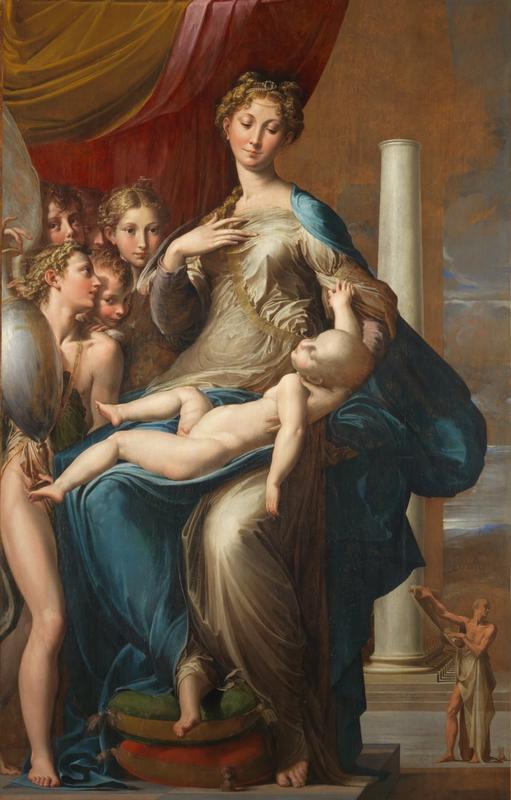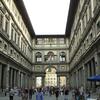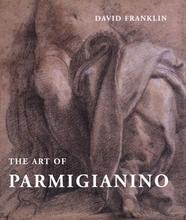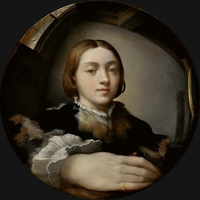More about Madonna with the Long Neck
- All
- Info
- Shop

Contributor
Madonna with the Long Neck by Parmigianino is a spectacular display of irresponsible parenting.
Madonna here, is holding little baby Jesus like he is some sort of rag doll and not the son of God. His left arm looks like it’s being dislocated for Christ’s sake (hehe) and Mary is barely trying to hold him up. C- for effort, Mary.
There is some explanation for this seemingly very dangerous position and that is that this is a Mannerist painting. As a Mannerist, Parmigianino loved to elongate limbs to a very extreme, anxiety-inducing extent. He supposed that the artists of the High Renaissance had already perfected the naturalism of figural painting and that he should switch things up and get a little funky with it. So he decided to exaggerate the poise, elegance, and basic skeletal structure of Renaissance figures. This explains quite a bit about the composition of the painting. It’s why Mary’s neck is so long, her head is so small, her hips are so wide, and her feet are so teeny tiny. It’s why Jesus looks like a giant man-baby. And it’s why the Prophet Jerome in the back right looks like he was on the set of "Honey I Shrunk the Kids." Mannerism!
There is another hypothesis as to why the Madonna here has such strange features, though. Vito Franco, a scientist at the University of Palermo, believes that the models for this Madonna as well as for the Mona Lisa had Marfan syndrome, “a genetic disorder that affects the body’s connective tissue” resulting in long arms, legs, and fingers in addition to a slew of other effects. But it could also just be Parmigianino’s style. We’ll never know because all of these people are dead.
Parmigianino didn’t totally flip the bird to the naturalism of the High Renaissance, though. In fact, this painting references the Pietà, a sculpture by Michelangelo in which a grown-up, post-crucifixion Jesus is draped across his mother’s giant lap. Madonna with the Long Neck may even be the first time that a piece of art referenced another piece of art instead of nature. Wowza!
This artwork is incredible, but Parmigianino’s true talent was not painting, but drawing. Peter Schjeldahl, the art critic for the New Yorker claimed that “something painful happened when [Parmigianino’s] graphic genius was transposed into colored oils: the template of Raphael’s snugly constructed space and harmonic color took over, reducing the young painter’s blazing originality to passive-aggressive weirdness—long necks, spooky eyes.” No one during the Renaissance agreed with this statement. This painting was an immediate hit, though Parmigianino didn’t live long enough to finish it. Elena Baiardi, the woman who commissioned this piece for her private chapel in the church of Santa Maria dei Servi at Parma in 1534, loved it. It was hugely popular during the 16th century and in 1698 was sold to Ferdinando de' Medici, Grand Prince of Tuscany. The painting’s last move was the Uffizi Gallery in Florence in 1948. It hangs there in all its unfinished glory, and will remain there, confusing and disturbing museum-goers, until the end of time.
Sources
- Glover, Michael. "Great Works: Madonna Of The Long Neck, 1535-40 (219Cm X 135Cm)." The Independent. N.p., 2012. Web. 23 Apr. 2018.
- Harris, Beth Dr., and Dr. Steven Zucker. Parmigianino, Madonna Of The Long Neck. Smarthistory, 2015. Video.
- Hooper, John. "Enigmatic Smile Of Leonardo Da Vinci's Mona Lisa A Sign Of Ill Health." The Guardian. N.p., 2010. Web. 23 Apr. 2018.
- "Madonna Col Bambino, Angeli E Un Profeta (Madonna Dal Collo Lungo) :: Parmigianino 1504-1540." Virtual Uffizi Gallery. Web. 23 Apr. 2018.
- "Madonna With The Long Neck." Artble. Web. 23 Apr. 2018.
- "Madonna With The Long Neck, Parmigianino: Analysis." Visual-arts-cork.com. N.p., 2018. Web. 23 Apr. 2018.
- Schjeldahl, Peter. "Out Of Time | The New Yorker." Newyorker.com. N.p., 2004. Web. 23 Apr. 2018.
- "What Is Marfan Syndrome? | The Marfan Foundation." Marfan.org. Web. 23 Apr. 2018.
Featured Content
Here is what Wikipedia says about Madonna with the Long Neck
The Madonna with the Long Neck (Italian: Madonna dal collo lungo), also known as Madonna and Long Child with Angels and St. Jerome, is an Italian Mannerist oil painting by Parmigianino, dating from c. 1535-1540 and depicting Madonna and Child with angels. The painting was begun in 1534 for the funerary chapel of Francesco Tagliaferri in Parma, but remained incomplete on Parmigianino's death in 1540. Ferdinando de' Medici, Grand Prince of Tuscany, purchased it in 1698 and it has been on display at the Uffizi since 1948.
Check out the full Wikipedia article about Madonna with the Long Neck














